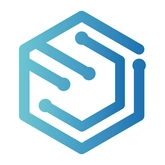The internet has been in what is now the Czech Republic for 30 years. The country’s first official connection was at the Czech Technical University in Prague (ČVUT).
One of the original ideas behind the internet was to connect universities and similar institutions so they could share research. The implementation was no different in then-Czechoslovakia.
Some academics tried to get Czechoslovakia to join up with the European Academic Research Network (EARN), a network similar to the internet, in 1987, but the then-communist government opposed the idea of sharing research with the west. Interest began again after the fall of the Iron Curtain. An IBM mainframe computer was installed in ČVUT in 1991. It connected to the EARN network via a landline link to Linz, Austria, at a speed of 9.6 kbps. This was a mere trickle compared to the average speeds today of 25 Mbps, over 2,000 times faster.
On Feb. 13, 1992, the ČVUT mainframe added a second channel for the internet. The EARN and internet networks operated side by side. By this time the speed had been increased to 19.2 kbps. Academic institutions across the country wanted to join in on the new technology.
The government launched a project originally called the Federal Educational and Research Network, which worked out to FERNET, the name of an alcoholic beverage. That was soon renamed Federal Education and Scientific Network (FESNET).
After Czechoslovakia split, the network became known as CESNET (Czech Educational and Scientific Network (CESNET) in June 1993. This network began to open the internet up for commercial use, but it still took until mid-1995 before home users could get a connection via phone lines and a modem. CESNET would continue to work to develop academic infrastructure and connection speeds.
There was also competition in the 1990s from local bulletin board systems called BBS, or in Czech "bíbíeska." An individual user would host something like a crude website on their own computer, and users would connect directly via phone and modem. This required knowing the phone number of the host.
Other phone numbers could often be found in a list on one BBS, but changing to another site involved disconnection from the first BBS and making another phone call. The easier-to-navigate internet in the end proved much more popular, and the Czech BBS network died out, just like similar networks in other countries worldwide.
The original offering of websites was rather limited, especially in the Czech language. A few Czech newspapers by the 1990s began to offer a limited selection of stories, and Czech companies began to post pages of basic information. Most were mainly in text, as connections were still very slow and relatively expensive. Loading pictures took a very long time.
Economia, the publisher of daily Hospodářské noviny, was one of the early entrants in internet news. They launched an online version of Obchodní časopis (Business Magazine) in 1994. This grew into what is now HN.Cz. The iDnes platform, which shares content from daily Mladá fronta Dnes, went online on Jan. 12, 1998.
Another early entrant in the Czech internet was Seznam.cz. Before Google, searching the web was hard. Seznam launched a web catalog, or list of sites, in 1996. A year later they had a text search engine called Kompas, which supported Czech diacritical marks. The company continues to have a large presence among people searching the internet in Czech.
The high cost of using the internet led consumers to lobby for changes. By 1999 providers began to offer monthly flat-rate connections rather than charging for each call to an internet provider by the minute.
In 2021, some 89 percent of Czech households had internet access, which was slightly below the below EU average of 92 percent, according to figures from Eurostat.
The number of people using smartphones to access the Internet has increased significantly, in the past few years, according to the Czech Statistical Office (ČSÚ). In 2010, about 4 percent of the population over the age of 16 connected to the internet via a mobile phone. By 2015 it was 37 percent, and by 2021 it reached 72 percent.
The Covid pandemic has seen a jump in online shopping. Some 57 percent of Czechs shopped online last year, up 3 percent from the year before and 18 percent more than in 2019, before the pandemic started.
There are currently over 1.43 million registered internet domains with the Czech national suffix .cz, according to Cz.Nic, which tracks registration information.












 Reading time: 3 minutes
Reading time: 3 minutes 
































